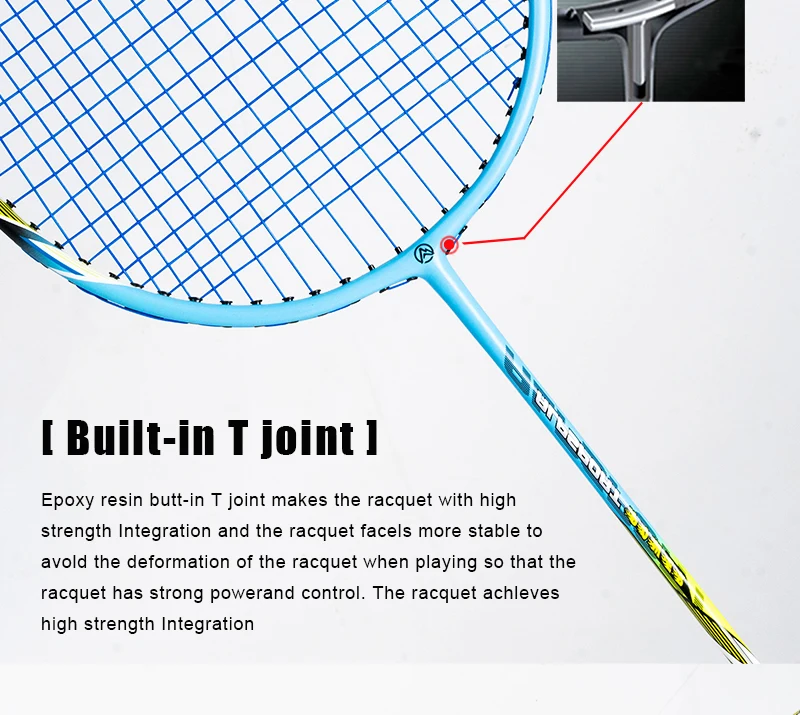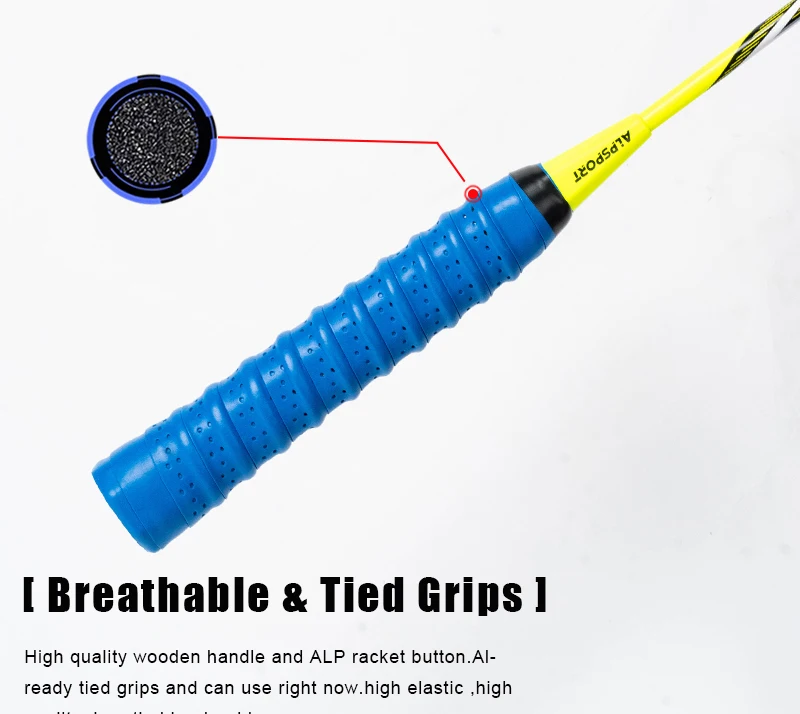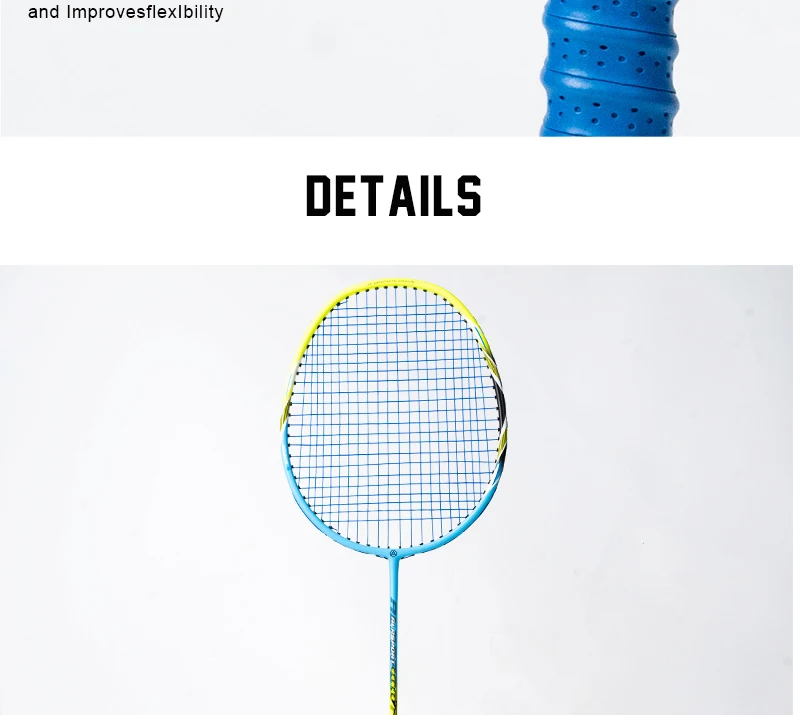Description

⚽️ ALP-SPORTS ? : Official High Tech Sport Shop ⚾️?
?NEW COMING PRODUCT 5U?
Brand: ALP-SPORT
Model: ALP BBQ
Weight: 3U / 85-85g (Unstrung Weight)
Package content: 2*racket,1* PU bag
Frame Material: T700 Carbon Fiber
Tension: 22-26 LBS (Original 24 LBS)
Balance: 290土5mm
Handle: G4
Color: Black / Red
Length: 680mm
Suitable for: Amateur Intermediate & Senior players training
Feature: Strong Smash / High speed attack performance / High hardness and durability / Anti-distortion / High resistance / Strong pressure resistance / Ultra-light and high-elasticity / Strong bearing capacity / Uniform frame















100% #Full Carbon #30LBS #String #Badminton #Racket #Professional #Ultra Light #Badminton #Racket #Free #String #High #Tech #G5 #T700 #Elastic #Fiber #Sports #Equipment #Men #Women #Gate #Attack #Training #Ball #Racket
ALP ZJ2.0 PRO 4U 82g G5 Ultralight Racket Hollow Net 100% Carbon Fiber Badminton Racket Bamboo shape Professional Racket Sports Equipment Gate Racket Badminton Training Racket
Sold separately Racket weight
The weight of a racket is usually indicated by "U". A good badminton racket usually weighs between 80 grams and 100 grams.
4U: 80-84 grams
3U: 85-89 grams
2U: 90-94 grams
1U: 95-100 grams
Choose the right weight for your level
Lightweight badminton rackets are highly recommended for beginners. These rackets usually weigh between 85 and 89 grams (3U) because they are easier to control.
Due to the fast swing speed and recovery, lightweight rackets are easy to serve quickly and transition to other strokes. Lightweight racquets are easier on the wrist and shoulder, reducing the chance of injury.
Singles players typically use a slightly heavier racket, such as a 3U racket, for added stability, and doubles players use a 4U racket, which allows them to react to their opponents with greater speed.
Balance Point
In addition to weight, racquets can be categorized according to their balance point or where the racquet weight is located. To determine the type of balance of a racket, place your finger under the middle of the racket's swing and note the direction of the racket's tilt.
There are three types of balance points
A. Head-heavy (attack type)
Head-heavy/attack type
Head-heavy racquets are tilted in the direction of the head. This type of racket adds power to the stroke and is suitable for players who want to play a powerful game from the back of the court. This type of racket is especially good for scrambling in the middle and backcourt, and is definitely a benefit for players who need to play long passes in a match.
B. Headlight (Defense)
Headlight/Defense
The headlight type racket has a tilted handle, making it easier to maneuver and swing the racket, and is popular with doubles players who need to react quickly to heavy hits from their opponents. Easier to maneuver and swing, these racquets are faster to react and faster at the net, allowing you to close out matches quickly in the forecourt.
C. Balance (both offense and defense)
Balanced / Offense and Defense
As the name suggests, a balanced racquet is one that has the same spindle weight. If you are unsure of your playing style, a balanced racket is the best choice in this case. If you are just starting out in badminton, this type of racket will be the perfect starting point for you. Once you are sure of your playing style, you can switch to a racket with a heavy or light head to enhance your overall experience.
III. Grip Thickness (Grip)
It is also important to choose the right grip for your racket, otherwise you will often have a grip that is too thin to hold on to when serving; a grip that is too large to hold on to; or a grip that requires a tight hand grip that cannot be relaxed, which interferes with the practice of bending your fingers to serve the ball.
Generally speaking, when holding the racket with the forehand, the index finger and thumb can hold the racket firmly, and the last three fingers can be easily tucked into the handle, leaving a gap, which is the most suitable for hand-gripping the racket.
The thickness of the handle of a racket is usually indicated by G, which is categorized into G0 to G5, with the larger the number, the thinner the handle. Generally speaking, Asian countries sell rackets for G4, G5, Europe and the United States are mostly G3, and the physiological characteristics of the crystal is different. In addition, the domestic Li-Ning badminton racket is labeled with S to mark the handle size, the smaller the number, the thinner the handle. s2 is similar to the mainstream G5.
You can also wrap a grip on top of the original one to get the most suitable thickness. Note: The thicker the rubber, the better the shock absorption, but the worse the power transfer.
Racket Hardness
(I) Center shaft hardness (stiffness)
There are two important parameters here. One is S (Stiff/Stiff) and the other is F (Flexible/Soft, Flexible). These two letters are usually marked on the club with a progress bar, and if it is close to S, the center shaft becomes softer and vice versa.
This is an important parameter that affects the accuracy of the shot. The softer the mid-shaft, the more you can utilize the "flex-recovery" action of the mid-shaft during the swing to increase bounce. This is why many players who prefer to kill the ball hard with a soft racquet feel unable to exert power.
Of course, the stiffer the center stick is not the better, as an overly stiff center stick can affect overall flexibility and give a "hard" feel to the swing. A relatively soft center stick is suitable for beginners. A relatively hard center stick is suitable for amateurs of a certain level (who know how to hit the ball with wrist power and can master the eight basic hitting motions of pulling, killing, chopping, pumping, pushing, and releasing. (Rolling, hooking).
(ii) Ball frame hardness
When you hit the ball, the ball stays on the racket surface for only four to six thousandths of a second.
In the process of swinging the racket before hitting the ball, there is a process of bending and recovery of the racket shaft when the racket face hits the ball. The ball flies off the face of the racket before the racket returns to its original position.
The softer the shaft, the more likely it is to bend during the pre-stroke swing. This will create more force on the ball.
The stiffer the shaft, the less force is transferred to the ball at impact, but the less vibration is transferred to the ball. For the frame, the stiffer the frame, the less likely it is to deform and twist on contact with the ball, and the more force is transmitted to the ball. The more force is transmitted to the ball, the less vibration is transmitted.
Five, pulling the feather line, pound
(A) feather line
Feather line is roughly divided into four kinds: sheep intestine line, nylon line, cattle wire, chemical fiber sheep intestine synthetic line.
Sheep intestines and oxblood thread with first-class feel and good elasticity, but due to the nature of the material itself, more brittle. They give more feel, control and power to the racket, and also absorb vibrations and reduce shock to the user's arm. However, they are expensive and do not last as long as other synthetic strings.
Nylon strings are characterized by their good shape, good ductility, inexpensive production of synthetic materials, and durability. The dimensions of nylon cords are specified by gauge number. Thicker nylon lines provide control and durability at the expense of power. Thinner synthetic threads provide power to the player's stroke, but are more prone to fraying, tearing, and breaking.



































